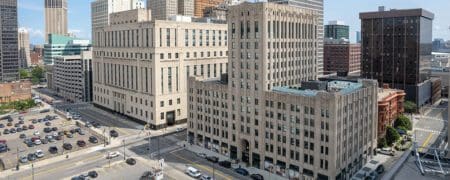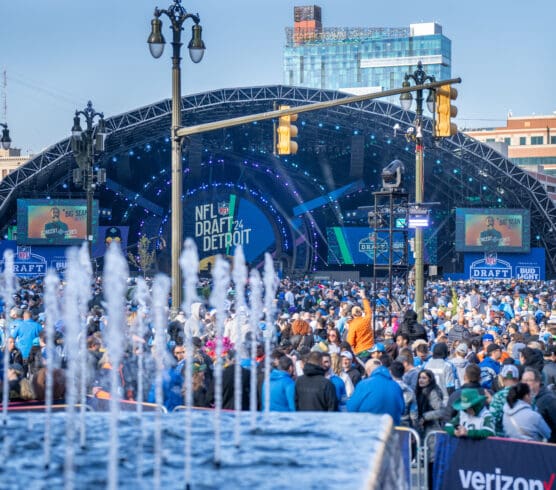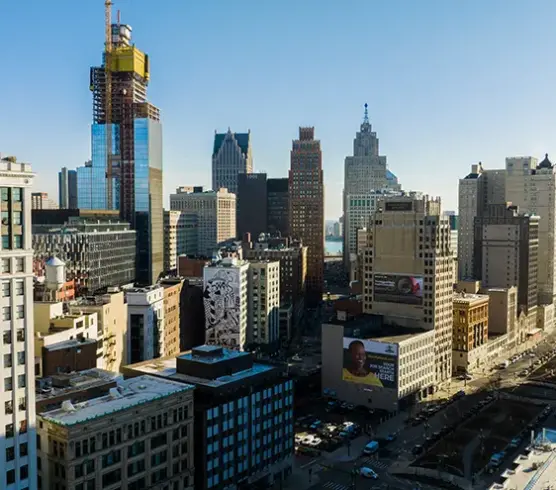By Joshua Long, Data Program Director
The number of office employees working remotely jumped dramatically due to the pandemic, which profoundly impacted Downtown business districts worldwide. Since the end of the emergency phase of the pandemic, the shift back to offices has been slow and incomplete. It is becoming clear that the remote or hybrid model is now here to stay for many office jobs.
Since we also have a housing affordability crisis broadly in cities across the United States, the practical solution would seem to be to repurpose much of the now-unused office space for residential or civic purposes. And in fact, cities across the country, including Pittsburgh, Seattle, Washington, D.C., and Boston have recently introduced plans to incentivize office to residential conversions. In practice however, modern Class A office buildings are often actually difficult to convert to residential uses for both practical and economic reasons.
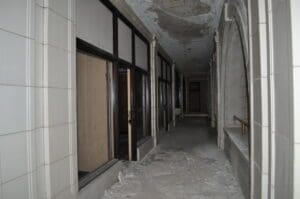
The challenges of converting office to residential are detailed in this wonderful article from the New York Times’ Upshot project. In short, modern glass and steel office buildings, starting from after the second world war, tend to be built with large, deep floor plates, and without individual opening windows that residential uses require. The deep floor plates are perfect for cubicle farms, but they do not let natural light and air permeate into what would be interior residential units. Because of these difficulties, the conversion of those modern Class A commercial office buildings to meet residential requirements is often unprofitable and impractical, if not impossible. Older office towers were built differently; with a design scheme centered on individual rooms and windows which makes residential conversion more practical.
Though the challenges to converting modern office buildings affect Detroit as well, the city’s growth (and decline) patterns separate it from the nation’s higher growth cities.
Downtown Detroit enjoyed its biggest building boom in the 1920’s. Detroit’s population peaked in the 1950’s when it had close to 2-million residents, and demand has declined since. However, this has become an opportunity with many of the older 1920’s skyscrapers not being replaced with modern glass and steel structures. Because of this abundance of older-designed office buildings, Downtown Detroit is ahead of the game in terms of capacity to create residential out of office space and other adaptive reuse projects. Many of those older office towers have been converted or are currently being converted. And there are still a number of those architecturally significant 1920’s era office towers that may be practical to convert if the demand for office space Downtown were to fall farther (The Penobscot, Buhl, Ford, Dime, First National, Guardian, to name a few that fit the criteria).
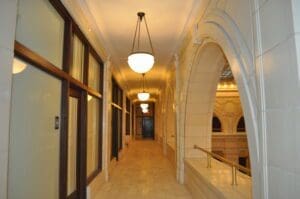
In fact, Crain’s Detroit Business recently reported that Bedrock Detroit had begun actively seeking proposals for a conversion of the Buhl Building. Could Downtown Detroit’s high proportion of pre-war skyscrapers, which put Detroit at a disadvantage for attracting modern office-based companies, be an advantage in converting the Business District to a more vibrant 24/7 economy?
The DDP tracks development projects Downtown and produces an annual Downtown Detroit Community and Development Update. Below is a list of adaptive reuse projects, pulled from this information, that were originally office space. These were either completed in the last decade or are currently in development.
Recent Office Conversion/Adaptive Reuse
| Building Name | Address | Primary Type | Year Complete | Project Status |
| The Foundation Hotel at the Detroit Fire Department Headquarters | 250 W Larned | Hospitality | 2017 | Complete |
| The Albert* | 1214 Griswold | Residential | 2014 | Complete |
| Vinton Building | 600 Woodward | Residential | 2018 | Complete |
| David Stott Building | 1150 Griswold | Residential | 2019 | Complete |
| Aloft Hotel at the David Whitney | 1 Park Avenue | Hospitality | 2014 | Complete |
| Church of Scientology | 1 Griswold | Institutional | 2018 | Complete |
| The Elliott Building | 1403 Woodward | Residential | 2017 | Complete |
| Louis Kamper and Stevens Buildings | 1410 Washington Blvd | Residential | 2019 | Complete |
| Broderick Tower | 10 Witherell | Residential | 2012 | Complete |
| Shinola Hotel | 1400 Woodward | Hospitality | 2018 | Complete |
| Philip Houze | 415 Clifford St | Residential | 2018 | Complete |
| Malcomson Building | 1215 Griswold | Residential | 2016 | Complete |
| 139 Cadillac Square | 139 Cadillac Square | Residential | 2019 | Complete |
| The Farwell Building | 1249 Griswold Street | Residential | 2019 | Complete |
| Security Trust Lofts | 735 Griswold | Residential | 2013 | Complete |
| The Siren Hotel at the Wurlitzer Building | 1509 Broadway | Hospitality | 2018 | Complete |
| Capitol Park Lofts | 1145 Griswold | Residential | 2017 | Complete |
| Clark Lofts | 35 W Grand River | Residential | 2017 | Complete |
| The Press 321 | 321 W. Lafayette | Residential | 2020 | Complete |
| Gabriel Houze | 305 Michigan Ave | Residential | 2020 | Complete |
| Detroit Savings Bank Apartments | 1212 Griswold | Residential | 2015 | Complete |
| Harvard Square Center | 1346 Broadway | Residential | 2021 | Pipeline |
| United Artists Theater Building (150 Bagley) | 150 Bagley | Residential | 2023 | Under Construction |
| Book Building and Tower Hotel | 1241-65 Washington Blvd | Hospitality | 2022 | Under Construction |
| Book Building and Tower Residential | 1241-65 Washington Blvd | Residential | 2022 | Under Construction |
